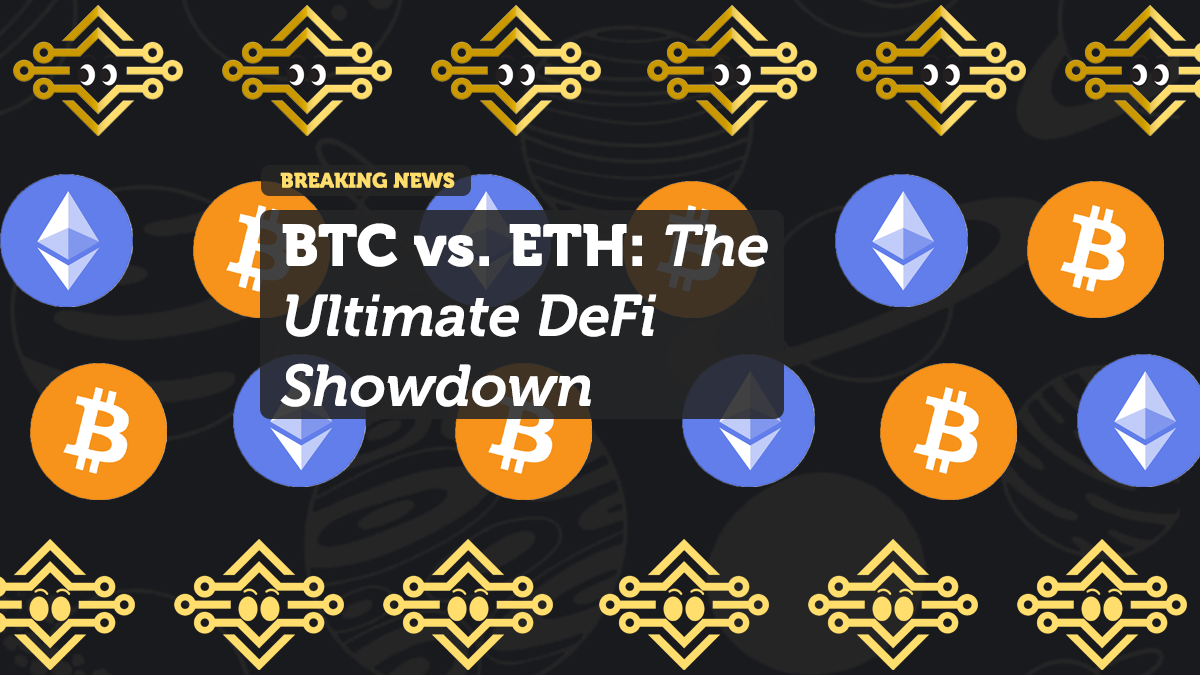
BTC vs. ETH: The Ultimate DeFi Showdown
Bitcoin and Ethereum play crucial roles in the crypto space, but their DeFi approaches are quite different. Bitcoin primarily serves as a store of value. However, Ethereum thrives as a DeFi hub due to its smart contract flexibility. This section will explore Bitcoin’s limited programmability and how it contrasts with Ethereum’s adaptability in the DeFi world.
Bitcoin’s Limited Programmability
Bitcoin was never designed for complex applications like decentralized finance (DeFi). Its scripting language is limited, allowing only basic functionalities. However, projects like Sovereign and RSK aim to change this by integrating Bitcoin into the DeFi ecosystem. These projects give BTC holders access to DeFi without needing to leave the Bitcoin network.
Ethereum’s Smart Contract Flexibility
Ethereum’s smart contract functionality has made it a dominant force in DeFi. It hosts projects like Aave, Compound, and Uniswap, which boast billions in Total Value Locked (TVL). Ethereum’s flexibility enables developers to build decentralized applications (dApps) for lending, borrowing, and trading. This has made it the go-to network for DeFi innovation.
Security: Battle of the Titans
Security is a core difference between Bitcoin and Ethereum. Bitcoin sticks to its Proof-of-Work (PoW) mechanism, while Ethereum has moved to Proof-of-Stake (PoS). But how do these consensus mechanisms measure up when it comes to DeFi?
Bitcoin’s Proof-of-Work Strength
Bitcoin’s PoW is the benchmark for decentralization and security. Its immense hash power makes the network highly resistant to attacks. This level of security is crucial for any DeFi applications that integrate Bitcoin. Users can trust Bitcoin’s decentralized nature to keep the network safe. However, PoW also results in slower transactions and higher costs.
Ethereum’s Shift to Proof-of-Stake
Ethereum’s PoS aims to improve scalability and reduce energy usage. Instead of computational power, validators stake ETH to secure the network. PoS offers faster transaction speeds and lower energy consumption, but it’s not yet as battle-tested as Bitcoin’s PoW. Critics argue that Ethereum’s PoS still needs to prove its security at the scale of Bitcoin’s long-standing PoW system.
Scalability: Lightning Network vs. Ethereum L2 Solutions
Scalability is a critical issue for both Bitcoin and Ethereum, especially as DeFi continues to grow. Both networks have developed Layer 2 (L2) solutions to address this challenge.
Bitcoin’s Lightning Network
The Lightning Network allows Bitcoin to scale by creating off-chain payment channels. These channels make transactions faster and cheaper, especially for small payments. However, Lightning’s use in DeFi remains limited. Most of its applications center around quick, low-cost payments, not complex financial services.
Ethereum’s Layer 2 Solutions
Ethereum’s L2 solutions—such as Arbitrum, Optimism, and zk-rollups—are tailored to DeFi’s needs. They reduce costs and speed up transactions while keeping Ethereum’s security intact. These L2s are already integrated into major DeFi platforms, offering a more scalable and flexible solution than Bitcoin’s Lightning Network.
Liquidity and Adoption: Which Network Leads?
Ethereum’s Dominance in Liquidity
Ethereum leads in terms of liquidity with billions in Total Value Locked (TVL). This liquidity supports a wide array of decentralized trading, lending, and yield farming protocols. Ethereum’s large developer community also contributes to its leading position, continuously driving innovation.
Bitcoin’s Growing DeFi Adoption
Bitcoin is catching up, thanks to projects like Sovereign and RSK. These platforms are introducing Bitcoin into the DeFi space, enabling BTC holders to engage in lending and borrowing. While Bitcoin’s DeFi liquidity remains limited compared to Ethereum, its growing integration into DeFi is a promising development for the future.
DeFi’s Future: Bitcoin Maximalism vs. Ethereum Innovation
The debate over DeFi’s future often centers on Bitcoin maximalism versus Ethereum’s innovation.
Bitcoin Maximalism
Bitcoin maximalists believe in Bitcoin’s position as sound money. They argue that Bitcoin’s focus on security and decentralization will ensure its long-term success, especially as a store of value in DeFi.
Ethereum’s Edge in Innovation
Ethereum, however, continues to lead in DeFi innovation. With its massive developer ecosystem, Ethereum supports rapid advancements in DeFi applications. Its smart contract platform makes it a favorite for developers looking to build new decentralized financial tools.
Cross-Chain Solutions: Bridging the Gap
New cross-chain solutions are emerging to bridge the gap between Bitcoin and Ethereum. These tools allow users to leverage Bitcoin in Ethereum-based DeFi platforms. As cross-chain solutions evolve, the lines between Bitcoin and Ethereum may blur, creating more fluid and interoperable DeFi ecosystems.
Conclusion
Bitcoin and Ethereum offer different advantages in DeFi, each with its own strengths and challenges. Bitcoin’s security and trustless nature make it ideal for value preservation, while Ethereum’s smart contract flexibility and innovation drive the DeFi ecosystem. Cross-chain solutions may ultimately allow the two networks to complement each other, creating a unified DeFi landscape.
















